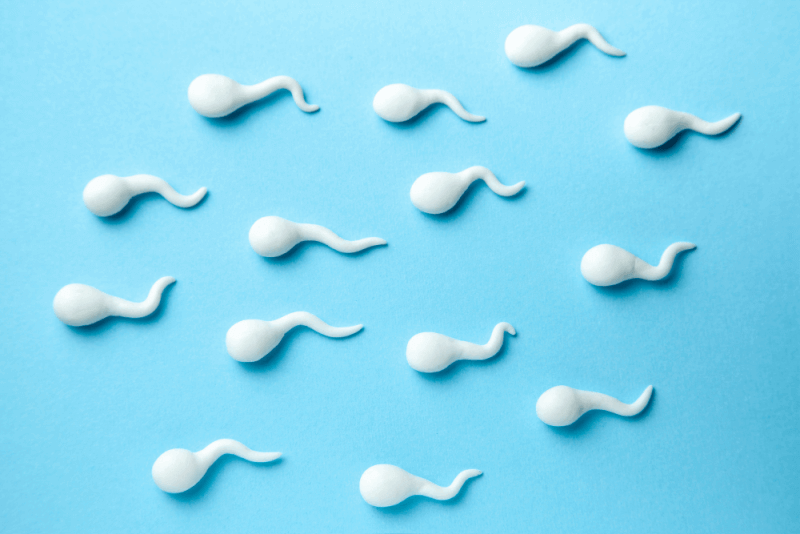30-Second Summary
- Rectal prolapse is a condition where the final section of the large intestine protrudes out through the anus.
- It is more common in women and the elderly.
- It occurs due to factors like prolonged constipation, straining during childbirth, genetic predisposition, aging, and nerve damage.
- The most common symptoms include a constant urge to strain, a feeling of wetness in the anus, difficulty in bowel movements, fecal incontinence, diarrhea, rectal bleeding, itching, and pain in the anal region.
- Surgical procedures are used for treatment.
What is Rectal Prolapse?
Rectal prolapse, also known as rectal descent, occurs when the last section of the large intestine protrudes out through the anus. In the early stages, patients experience changes in bowel habits and may be disturbed by anal discharge. In the later stages, the intestine may protrude out of the anus. Both the prolapse and the act of the bowel protruding during defecation and retracting afterward can cause damage to the muscles that control the anus, leading to difficulties in controlling bowel movements.
Rectal prolapse is more common in women and the elderly and is often accompanied by bladder and uterine prolapse. It is also frequently seen in men who have prolonged constipation and use medications for it. In the early stages, the prolapsed intestine may retract on its own. However, as the condition progresses, patients may need to manually push the protruding part back inside.
Stages of Rectal Prolapse
Rectal prolapse is a progressive condition, and its advancement is divided into stages.
Stage 1
In the first stage, the prolapse is limited to the rectal mucosa, and this condition is known as rectal mucosal prolapse.
Stage 2
In the second stage, the prolapse extends to the rectal wall, causing the rectal wall to fold into itself. This stage is also known as rectal intussusception.
Stage 3
In the final stage, the rectal walls that have folded into themselves protrude out of the anus, a condition known as external rectal prolapse.
Causes of Rectal Prolapse
There are many causes of rectal prolapse. The most common causes include prolonged straining due to chronic constipation and straining during childbirth. In some cases, there is a genetic predisposition. Additionally, physical changes associated with aging, such as weakening of the pelvic floor muscles and the muscles that control the anus, can also trigger rectal prolapse.
Another factor that can cause rectal prolapse is nerve damage. When the nerves that send signals to the anal muscles are damaged for various reasons, patients may experience difficulties with both holding stool and defecating. These issues can contribute to the development of rectal prolapse. Factors that can lead to nerve damage in the anal area include pregnancy or vaginal childbirth, pelvic surgeries, spinal injuries, and spinal fractures. Rectal prolapse usually occurs due to a combination of several factors rather than a single cause.
Symptoms of Rectal Prolapse
The common symptoms of rectal prolapse include:
- Constant urge to strain
- Feeling of wetness in the anus
- Difficulty in bowel movements
- Fecal incontinence
- Urinary incontinence
- Chronic constipation
- Involuntary passage of gas
- Involuntary passage of stool
- Staining of underwear
- Diarrhea
- Rectal bleeding
- Itching in the anal region
- Discomfort while walking or sitting
- Ulceration in the anal region
- Foul-smelling discharge from the anus
- Pain in the anal region
- Tissue death in the prolapsed rectal segment
Diagnostic Criteria (Tests) for Rectal Prolapse
In most cases, a clinical examination is sufficient to diagnose rectal prolapse. In some situations, patients may be asked to strain during the examination to assist in diagnosis.
Video Defecography
In some patients, rectal prolapse is hidden within the anus. In these cases, a special X-ray film called video defecography, taken during defecation, can help diagnose rectal prolapse. This technique allows images to be captured during bowel movements, and treatment planning can be made accordingly.
Anorectal Manometry
Another test used for rectal prolapse is anorectal manometry, which evaluates the function of the muscles around the anus and the coordination between the anus and rectum.
Endoscopic Examination
Endoscopic examination is another diagnostic method used for rectal prolapse. Techniques such as anoscopy, rectosigmoidoscopy, rectoscopy, and colonoscopy are selected and performed based on the patient's needs.
Treatment Methods for Rectal Prolapse
While eliminating the causes of chronic constipation that lead to constant straining can help, rectal prolapse cannot be reversed once it occurs. Therefore, surgical procedures are the only option for treating rectal prolapse. There are two different surgical approaches available for rectal prolapse.
Abdominal Approach
In this method, surgery for rectal prolapse is performed through the abdomen.
Perineal Approach
In surgeries performed through the perineal approach, the procedure is carried out via the anus. The most suitable method for the patient is determined based on their overall health condition and test results.
Exercises for Rectal Prolapse
Kegel exercises are movements performed to reduce prolapse without surgery. To be effective, it is important to focus on both contraction and relaxation movements.
Biomechanics, or alignment, refers to how the body is aligned during activities such as walking or standing. Proper alignment directly affects the pelvic floor's position. Strengthening the hip muscles, maintaining good alignment, and strengthening the core are essential for reducing prolapse without surgery.
To perform Kegel exercises, the first step is to identify the location of the pelvic muscles. This can be done by trying to stop the flow of urine, which requires contracting the pelvic floor muscles.
Once the pelvic muscles are identified, they should be contracted for 10 seconds and then relaxed. This process should be repeated. It is important to focus on the pelvic muscles during the exercise and avoid using the abdominal muscles. For the best results, the exercise should be repeated three times a day.
Rectal Prolapse Surgeries
Surgery is the only treatment option for rectal prolapse. Two different surgical methods are available, and the choice of method is based on the patient's overall health condition, age, radiological test results, and the type of prolapse. However, the goal of both methods is to lift the prolapsed bowel back into place.
Abdominal Repair
Laparoscopic surgery, performed through small incisions in the abdomen, has become one of the most common procedures in recent years. This procedure, called ventral mesh rectopexy, can also treat vaginal hernias along with rectal prolapse.
In the abdominal approach, a synthetic mesh is used to lift the bowel. The mesh is placed between the vagina and rectum in women, which allows for the treatment of vaginal hernias if present. Additionally, other health issues that often accompany rectal prolapse in women, such as uterine and bladder prolapse, can also be treated.
Anal Repair
There are six different techniques used in the anal repair approach. The first technique, called STARR (Stapler Transanal Rectal Resection), involves removing the excess rectal mucosa that prolapses through the anus. This method is suitable only for patients with rectal intussusception and mucosal prolapse. After STARR operations, about 5-10% of patients develop a persistent urge to strain due to narrowing at the staple line.
Another technique used in anal repair is perineal resection, where the prolapsed rectum segment is cut and removed through the anus. The bowel is then reconnected to the anus by stitching. Perineal resection is a method used for elderly patients or those with high risks for general anesthesia who are not suitable for abdominal repair. The recurrence rate after this technique is 8%, and the complication rate is 3%.
Rectal mucosal prolapse surgery is another method performed through the anus. This involves folding and lifting the rectum upward. The recurrence rate after this surgery is 10%, and 5-10% of patients experience bleeding or painful bowel movements.
Mikulicz operations often use a stapling device called a stapler. The rectum is shortened with this device, and stitches are placed to strengthen the puborectal muscle. The complication and recurrence rates after this surgery are both 8%.
The procedure of fixing the rectum to the sacrum with stitches is called transsacral rectopexy. The recurrence rate after this treatment is 2%, and the risk of losing the patient is very rare.
In the Goldberg-Freyckman technique, after the rectum is fixed with stitches, the sigmoid colon is removed. The recurrence rate after this treatment is 3%, and the risk of losing the patient is 4%.
What are the Risks of Rectal Prolapse Surgery?
Regardless of the method chosen for rectal prolapse treatment, there are some risks associated with surgery and the postoperative period. These risks include:
- About 6% of patients experience bleeding after surgery. This bleeding occurs inside the rectum and may also be accompanied by ulceration.
- About 20% of patients experience an urgent need to defecate after surgery. This symptom is known to resolve on its own over time.
- Formation of diverticula in the intestines.
- In women, a condition called rectovaginal fistula occurs when a hole forms in the vaginal canal, allowing stool to pass through it. This complication occurs in 5% of patients after surgery.
- Intestinal obstruction.
- About 5% of patients experience wound healing problems.
Dietary Changes
Especially for patients diagnosed with partial rectal prolapse, a diet consisting of easily digestible foods that do not cause constipation is recommended. Patients need to adhere to this diet and avoid overeating.
Use of Laxatives
Laxatives are used in the treatment of patients with severe constipation to help them defecate more easily. However, long-term use of these medications is not recommended, as they can adversely affect bowel movements and reduce the absorption of nutrients, leading to vitamin and mineral deficiencies.
Complications of Rectal Prolapse
If rectal prolapse is not treated, patients may develop complications, including:
- A portion of the small intestine can become trapped within the prolapsed rectum, leading to bowel necrosis.
- The prolapsed portion of the bowel can become perforated due to friction. In patients who have undergone surgery, leakage at the suture site may occur.
- Mucosal prolapse.
- Fecal incontinence.
- Gas incontinence
- Cancer risk.
- Presacral nerve damage.
- Anal pain.
- Anal fistula.
- Anal abscess.
How is Rectal Prolapse Classified?
The classification used today was defined by Altemeier in 1971. According to this classification, rectal prolapse is divided into three classes.
Type 1
Type 1, also known as pseudo-prolapse or rectal mucosal prolapse, is usually associated with hemorrhoids.
Type 2
In Type 2, where problems like gas and fecal incontinence are common, the rectum does not prolapse through the anus. Instead, the rectum folds into itself about 7-8 cm inside the anal canal, a condition known as intussusception.
Type 3
Type 3 is the most common type of rectal prolapse. In this type, the rectum fully prolapses outward through the anus.
Rectal Prolapse in Children
Rectal prolapse is a health issue that develops in children under 5 years of age. It occurs equally in both girls and boys and may be accompanied by rectal bleeding in some children. In children, rectal prolapse initially occurs during defecation and may retract on its own afterward. However, over time, it may protrude due to increased abdominal pressure from activities like sneezing or straining. It usually resolves on its own after the age of 5.
Symptoms in Children
Symptoms of rectal prolapse in children may include:
- Prolapse of the anus during defecation
- Initially, the prolapse is small, but it can progress to a length of 15-20 cm in later stages.
- Ulcer formation may occur.
- Bleeding may occur.
Treatment of Rectal Prolapse in Children
The treatment of rectal prolapse in children is primarily medical. If medical treatment is not successful, injection and surgical methods may be considered.
Injection
In cases where medical treatment is not effective, injections may be used. This procedure is performed under general anesthesia, and different types of solutions can be used:
- 55% phenol and glycerin, which has the lowest risk of complications
- 10-30% hypertonic NaCl solution, which has the highest risk of complications
- 25-50% glucose solutions
Surgery
Surgery is considered if other treatments are unsuccessful. The surgical techniques used for children are similar to those used for adults.














